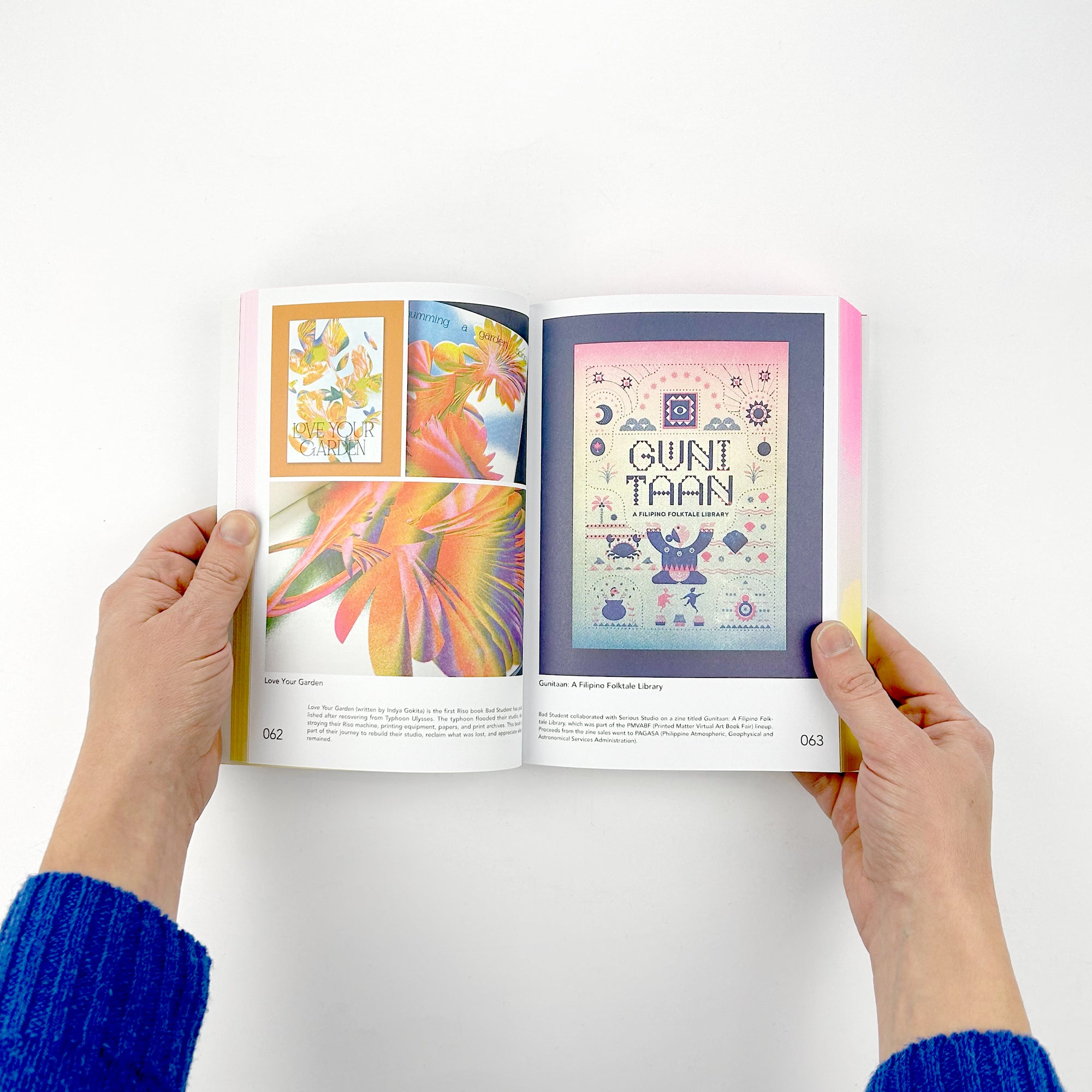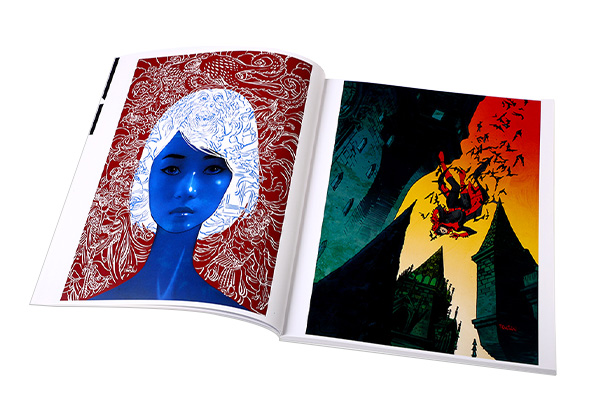The Secrets Behind Successful art book Projects
Browsing the Globe of Art Book Printing: Tips and Tricks for a Remarkable End Up
When it comes to art book printing, you need to blend creativity with technical know-how for the ideal outcomes. Allow's explore what that is and how it can elevate your art book.
Comprehending the Printing Process
When you submerse on your own in the globe of art book printing, comprehending the printing process is essential for accomplishing your desired results. Begin by acquainting on your own with various printing methods, like electronic and balance out printing. Each technique has its strengths, so consider your project's range and budget plan.
Next, take notice of color management. Make certain your photos are in the correct shade profile, as this influences just how they'll show up in print. You'll also wish to select the best resolution-- 300 DPI is standard for high-grade prints.
Always demand a proof prior to the final print run to capture any type of errors or inconsistencies in shade. Comprehending these aspects can substantially enhance the high quality and total look of your art book.
Selecting the Right Paper
Picking the best paper can greatly affect the total look and feel of your art book. You'll wish to assess factors like weight, structure, and surface. A much heavier weight paper can provide your images a much more elegant look, while lighter documents might feel much more fragile.
Appearance plays an essential function too; glossy paper improves shades and information for vibrant photos, while matte paper offers a much more suppressed and imaginative look. Think of how you desire your art work to be regarded-- do you prefer sharp contrasts or softer edges?
Don't forget to evaluate samples prior to making a last choice. This will certainly aid you envision just how your art connects with various documents. Bear in mind, the right choice can boost your book from ordinary to remarkable, ensuring your innovative vision radiates with in every page. So take your time, check out choices, and choose carefully for the very best outcomes.
Discovering Binding Choices
When it comes to binding your art book, you have actually obtained a number of options to consider that can impact both the look of your task. Think of the toughness features you require, along with the expense implications of each binding approach. Selecting the right binding can boost your art work and guarantee it lasts for years ahead.
Sorts Of Binding Methods
There are a number of binding approaches to ponder for your art book, each offering distinct advantages and looks. For a more artistic touch, think about spiral binding; it permits your book to lay level, showcasing your art work beautifully. Each binding method has its appeal, so assume about your book's purpose and audience to choose the one that best matches your vision.

Selecting Longevity Attributes
After considering the numerous binding approaches, it's time to concentrate on toughness functions that can boost the long life of your art book. Picking a durable binding choice is vital; consider options like instance binding or lay-flat binding, which provide extra toughness. Furthermore, focus on the kind of glue made use of; a top notch PVA glue can assure the pages stay safe and secure gradually. If you expect your book to sustain regular handling, choose materials like laminated covers or coated paper, which stand up to deterioration. Finally, consider just how you'll keep the book-- making use of a protective slipcase can add an additional layer of defense versus dust and damages. Prioritize these attributes to keep your art book looking pristine.
Expense Effects of Binding
While selecting a binding option for your art book, it's vital to ponder how each choice impacts your budget. Saddle stitching is more economical, perfect for smaller sized publications, yet it may not fit larger projects. Inevitably, choosing the right binding alternative can boost your art book's discussion without breaking the bank.
Designing for Publish
When creating for print, you require to focus on clearness and visual influence to properly display your artwork. Start by picking a shade combination that matches your items, ensuring it converts well theoretically. Remember that colors might show up in a different way in print than on-screen, so choose hues that keep vibrancy when printed.
Use high-resolution photos to prevent pixelation; goal for at the very least 300 DPI for peak top quality. Consider your typography meticulously-- choose fonts that boost your art without overpowering it. Maintain an equilibrium in between text and visuals, guaranteeing that neither sidetracks from the other.
Focus on format and see this site white room, as these components assist the viewer's eye and develop a harmonious circulation. Finally, assume about the size and dimensions of your book; it needs to improve your art work, not constrict it. By concentrating on these aspects, you'll develop a magnificent print design that mesmerizes your target market.
Proofing Your Art Work
Once you have actually settled your style, it's time to proof your artwork to validate whatever looks as meant. Begin by looking for any spelling or grammatic errors, as these can interfere with your message. Next off, check out shade precision. If your artwork is vibrant on-screen, however boring on paper, changes may be needed. It's additionally vital to assess image resolution; low-resolution images can appear pixelated, destroying the general top quality.
Print a test proof to see how your layout translates to paper. This step offers important insights into color, contrast, and layout. Don't be reluctant to request comments from trusted peers or colleagues-- they might catch concerns you ignore. Make certain your artwork sticks to any kind of certain guidelines your printer requires, such as hemorrhage and cut lines. A comprehensive proofing process warranties that your end product reflects your hard job magnificently.
Dealing with a Printer
When you prepare to publish your art book, discovering the best printer is necessary. You'll require to plainly communicate your vision and comprehend the printing specs to guarantee every little thing transforms out as anticipated (art book). Let's discover just how to make this process smooth and successful
Choosing the Right Printer
Selecting the right printer can make all the distinction in bringing your art book vision to life. Study regional and on-line printing business, paying attention to their portfolios and client testimonials. You desire a printer experienced in art books, as they'll comprehend the nuances of recreating your artwork consistently.
Communicating Your Vision
To assure your art book appears equally as you picture, it's essential to communicate your vision plainly with your printer. Begin by sharing your innovative idea, consisting of motifs, shades, and any type of specific components you want highlighted. Discuss the overall feel you're going for, whether it's contemporary, traditional, or progressive. Be open regarding your budget plan and timeline; this helps your printer provide realistic choices. Don't be reluctant to share samples or references that influence you. Ask inquiries and make certain you recognize their processes, as this constructs a joint partnership. Establish normal check-ins throughout production to make specific whatever straightens with your expectations. Clear interaction can transform your vision right into a tangible work of art.

Recognizing Printing Specifications
With your vision plainly articulated, it's time to focus on the technical side of printing your art book. Comprehending printing specs is crucial for accomplishing the best outcome. Beginning by reviewing your preferred paper type; choices like shiny or matte can significantly influence the visual charm. Next, consider guide's dimensions-- common dimensions are frequently much more affordable, but custom dimensions can boost your special design. Do not fail to remember to examine the resolution of your photos; they need to go to least 300 DPI for crisp prints. Clarify your color preferences-- CMYK is basic for print, while RGB is utilized for digital. By recognizing these specifications, you'll ensure a smoother partnership with your printer and try this out a magnificent end product. Look At This
Marketing Your Art Book
Marketing your art book properly can make all the difference in reaching your target market and increasing sales. Start by determining your target market. Are they art enthusiasts, collection agencies, or trainees? Tailor your messaging to resonate with them. Utilize social networks platforms like Instagram and Pinterest, where visuals shine. Showcase your art work, share behind the curtain web content, and involve with your fans with stories and articles.
Take into consideration hosting a launch occasion or taking part in art fairs to attach with prospective buyers directly. Team up with influencers or blog writers in the art area to expand your reach. Don't underestimate the power of email advertising and marketing; build a mailing list to maintain interested visitors updated.
Ultimately, leverage online industries and your website for direct sales. Offer minimal versions or special promotions to produce necessity. By combining these methods, you'll raise visibility and drive sales for your beautiful art book.
Frequently Asked Concerns
What Is the Average Expense of Art Book Printing?
The average expense of art book printing varies widely based on aspects like size, page matter, and materials. Generally, you're considering anywhere from $10 to $50 or even more per book, depending on your options.
How Lengthy Does the Printing Refine Commonly Take?
The printing procedure generally takes about two to four weeks, relying on the job's complexity and volume. You'll need to consider layout, proofing, and potential modifications to ensure every little thing meets your expectations.
Can I Publish a Minimal Version of My Art Book?
Yes, you can print a limited edition of your art book. Simply determine the amount of copies you want, choose a high quality printer, and ensure you have actually got the right products to produce a special feeling.
What Data Formats Are Best for Publishing My Artwork?
For publishing your art work, usage high-resolution files like TIFF or PDF. These styles preserve quality and shade precision. Stay clear of JPEGs for final prints, as they can lose information. Constantly check your printer's specs for ideal outcomes.
Exactly How Can I Guarantee Shade Precision in My Printed Schedule?
To ensure color accuracy in your printed book, make use of a calibrated display, soft evidence your files, and choose a trusted printing service. Consider using RGB or CMYK shade modes as needed for your artwork.